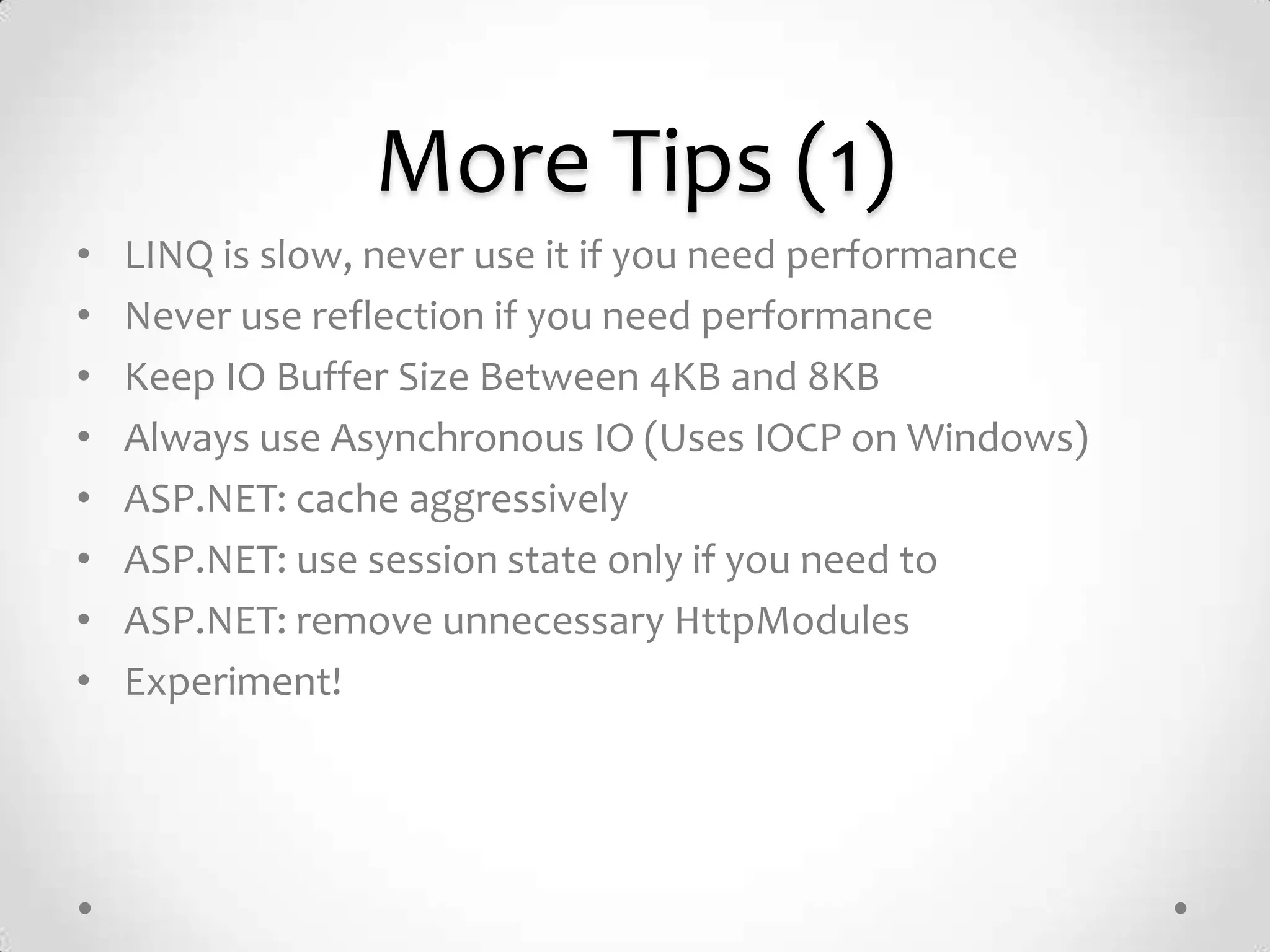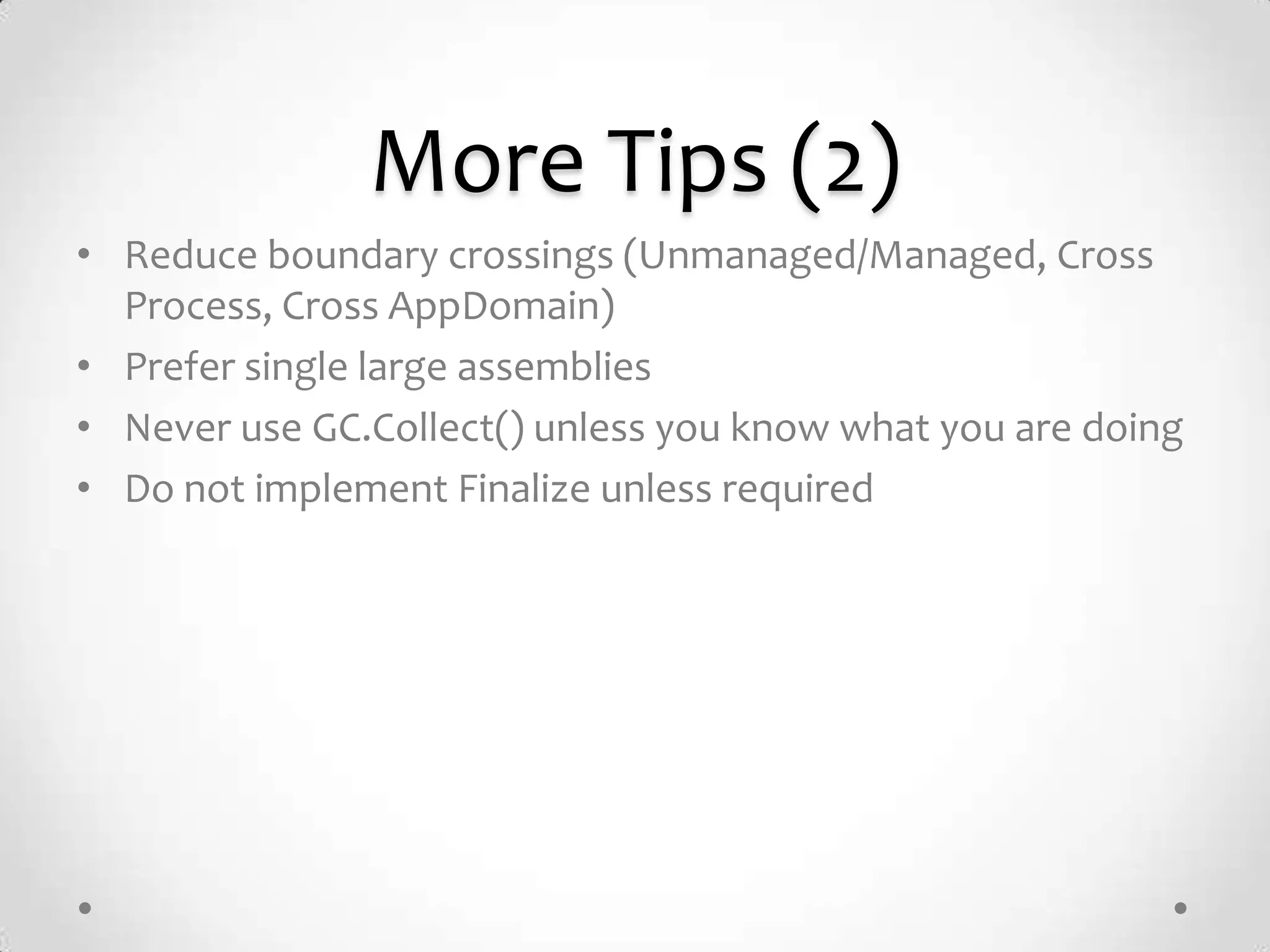This document provides guidance on optimizing C# code for performance. It discusses topics like memory management, flow and control structures, data structures, and function calls. Some key recommendations include preferring single large assemblies to multiple smaller ones, reusing memory through object pooling rather than frequent allocation, using 'for' loops instead of 'foreach' when possible, and choosing the appropriate collection type based on usage needs. Premature optimization is discouraged, and exceptions should generally not be overused to control program flow.
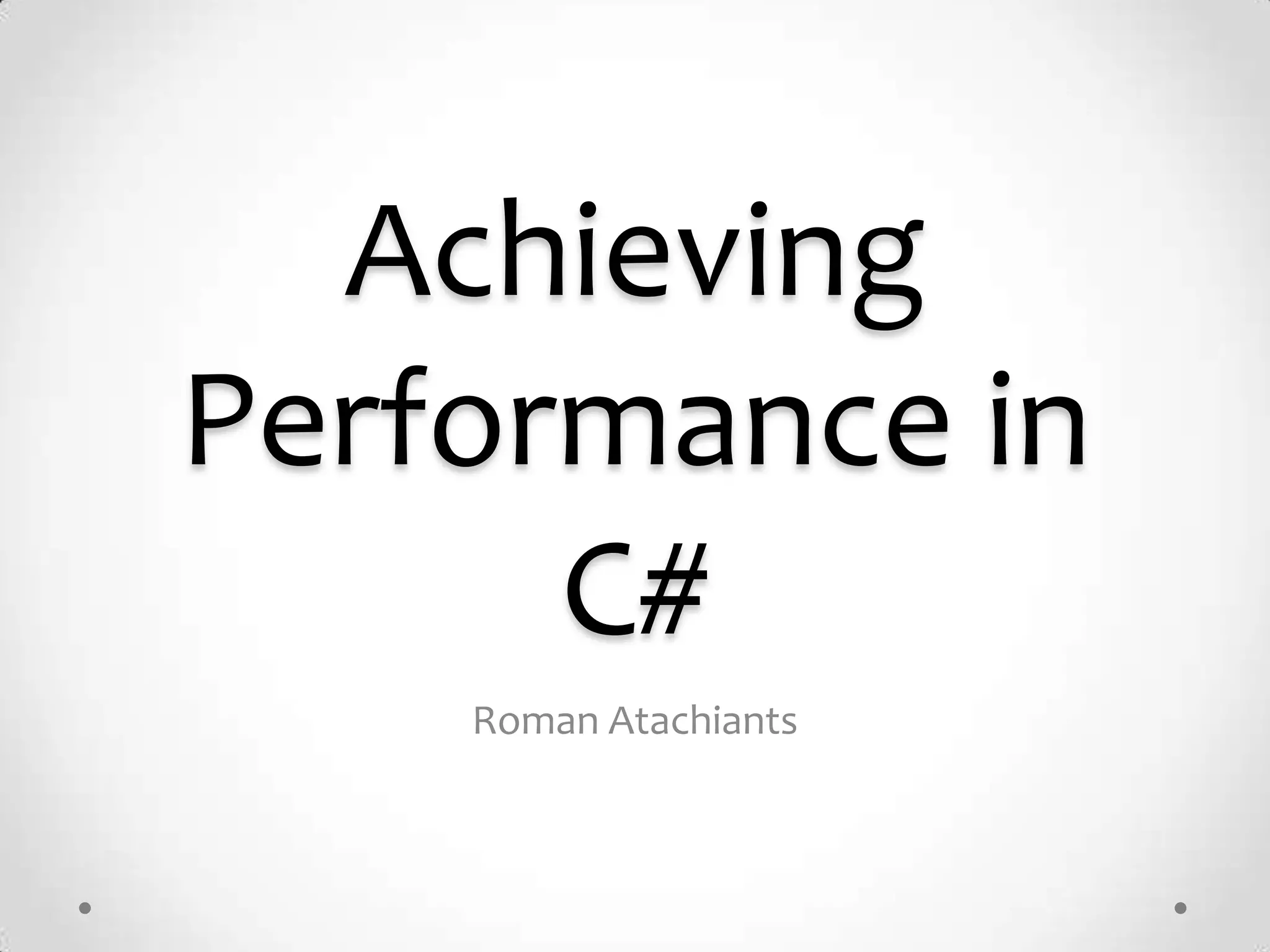
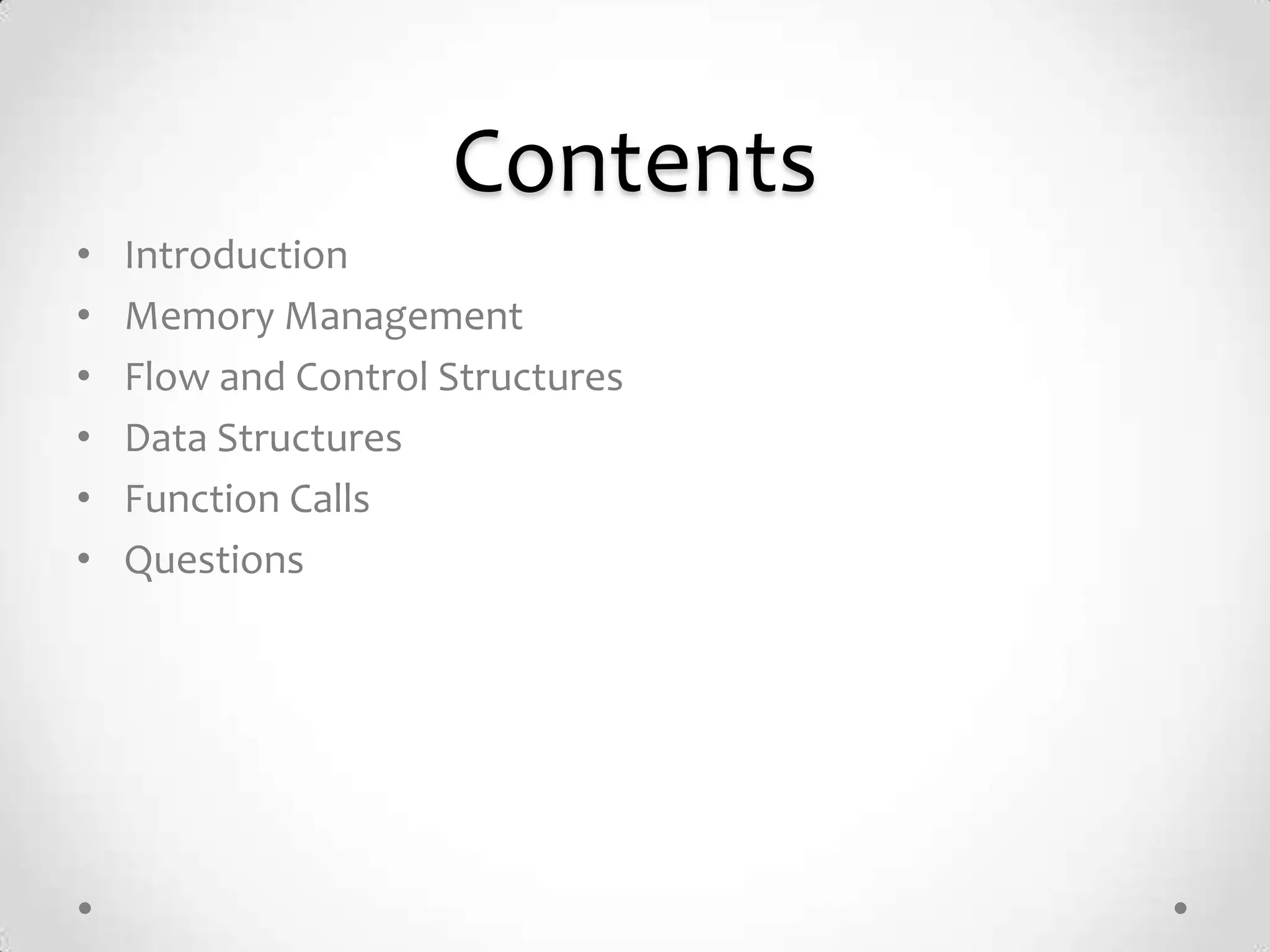
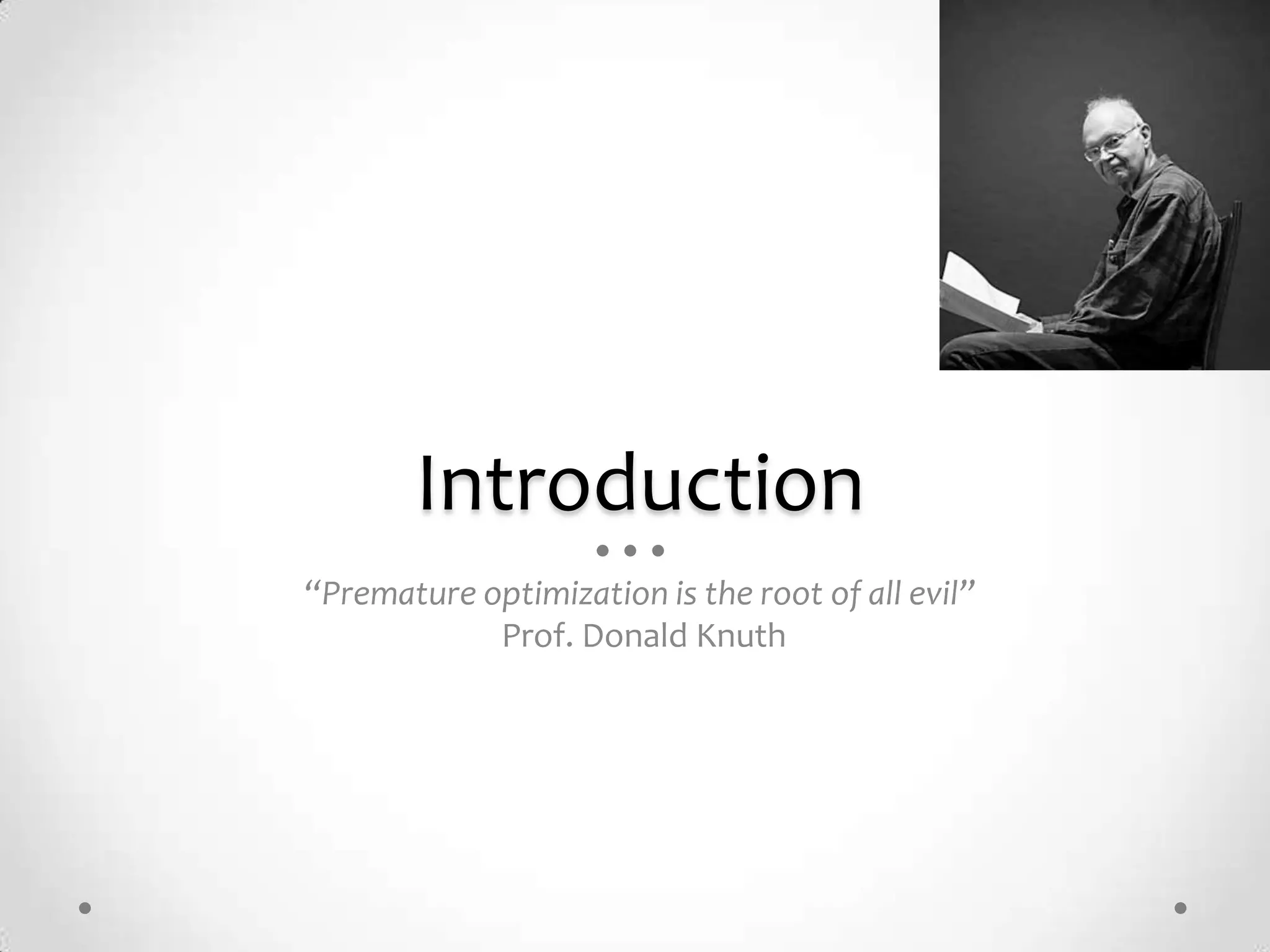
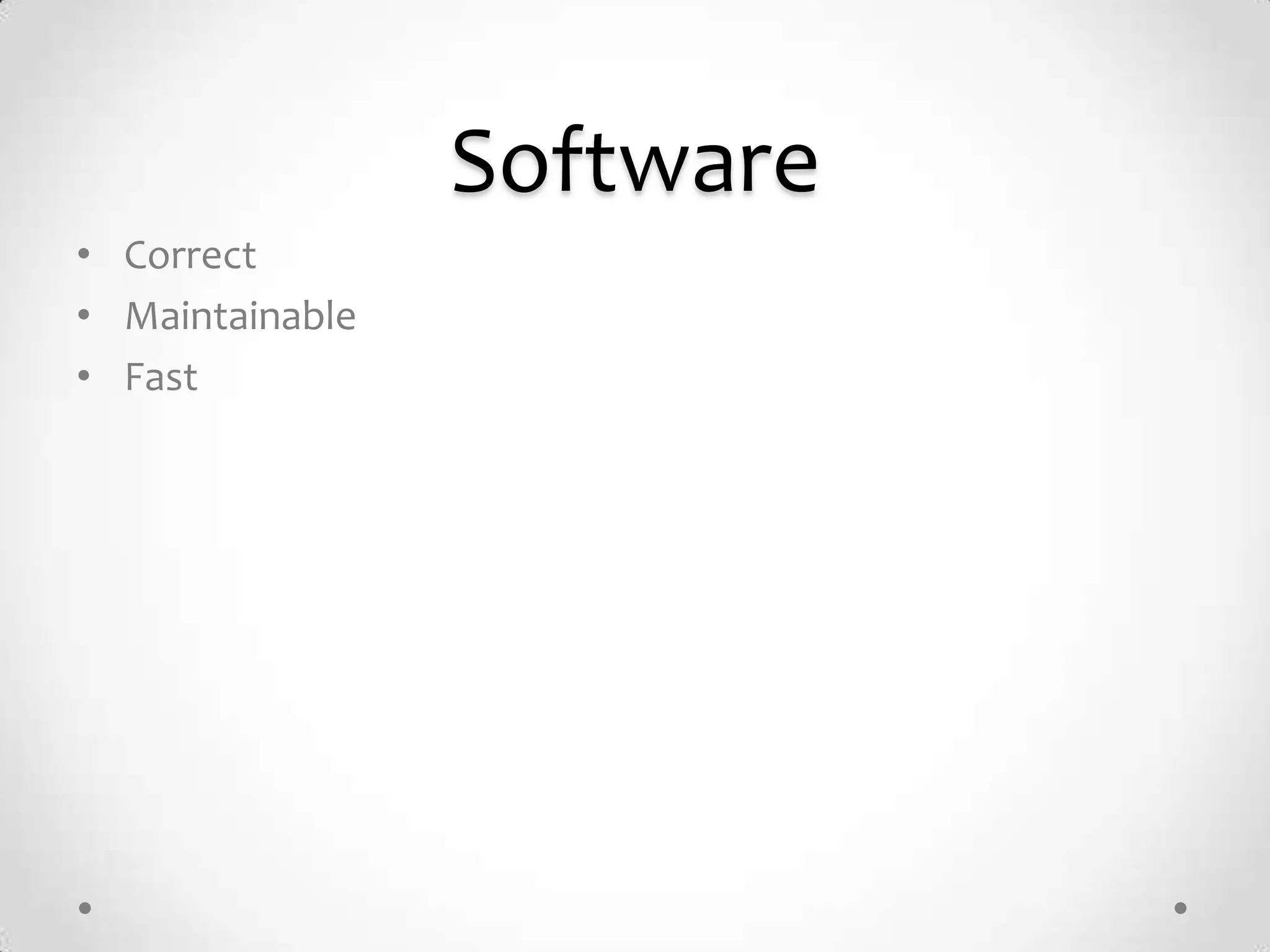
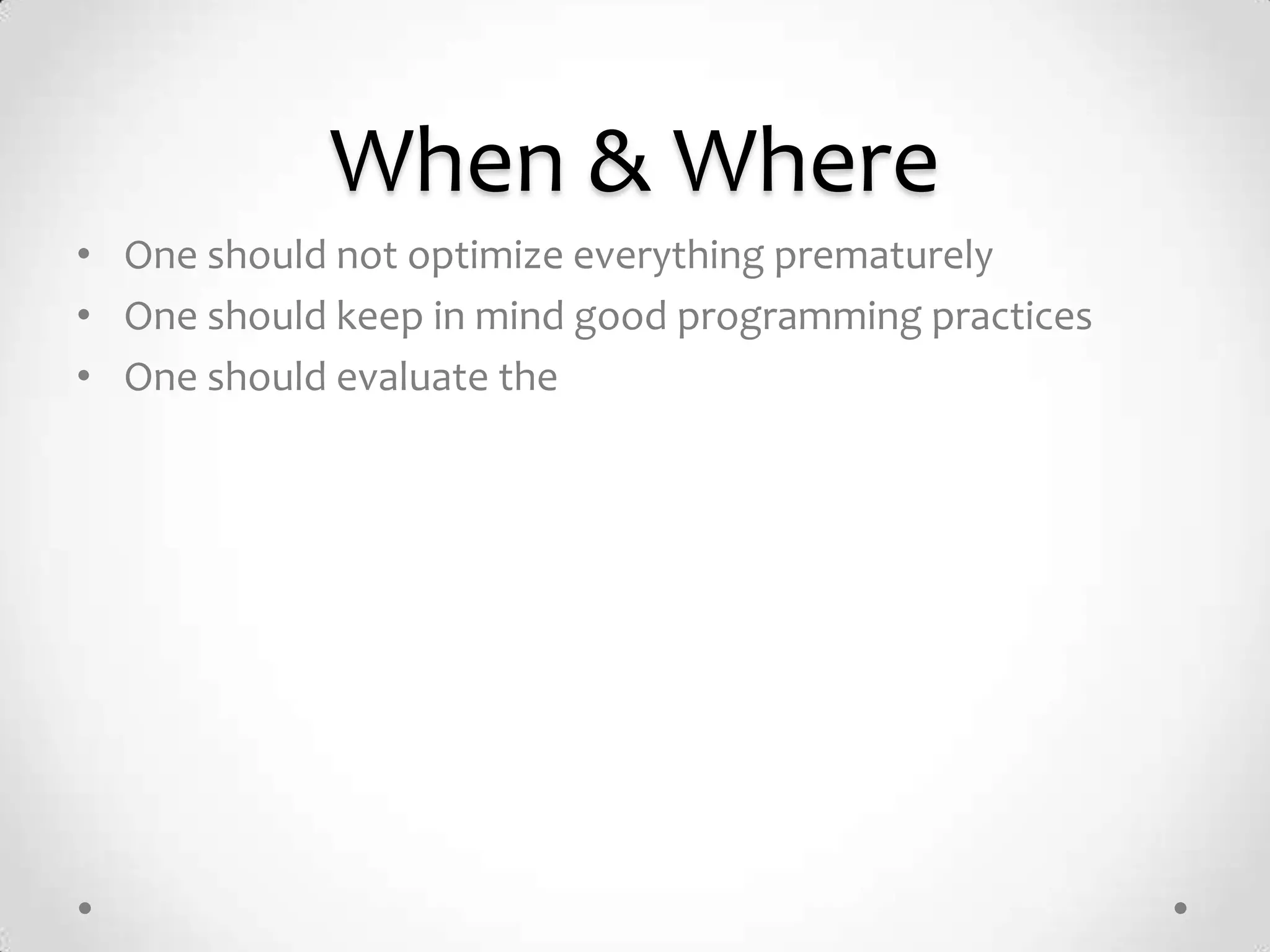

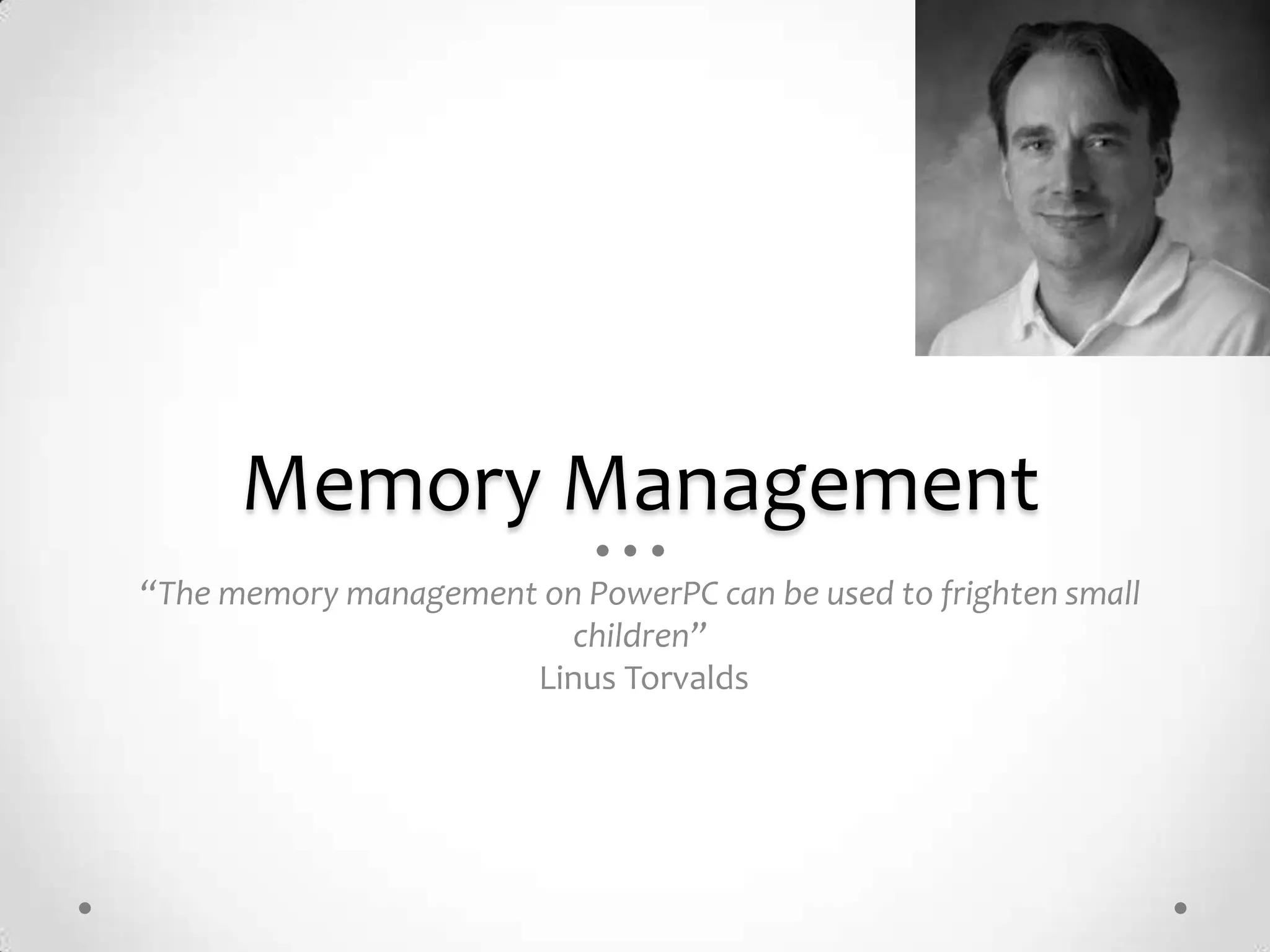
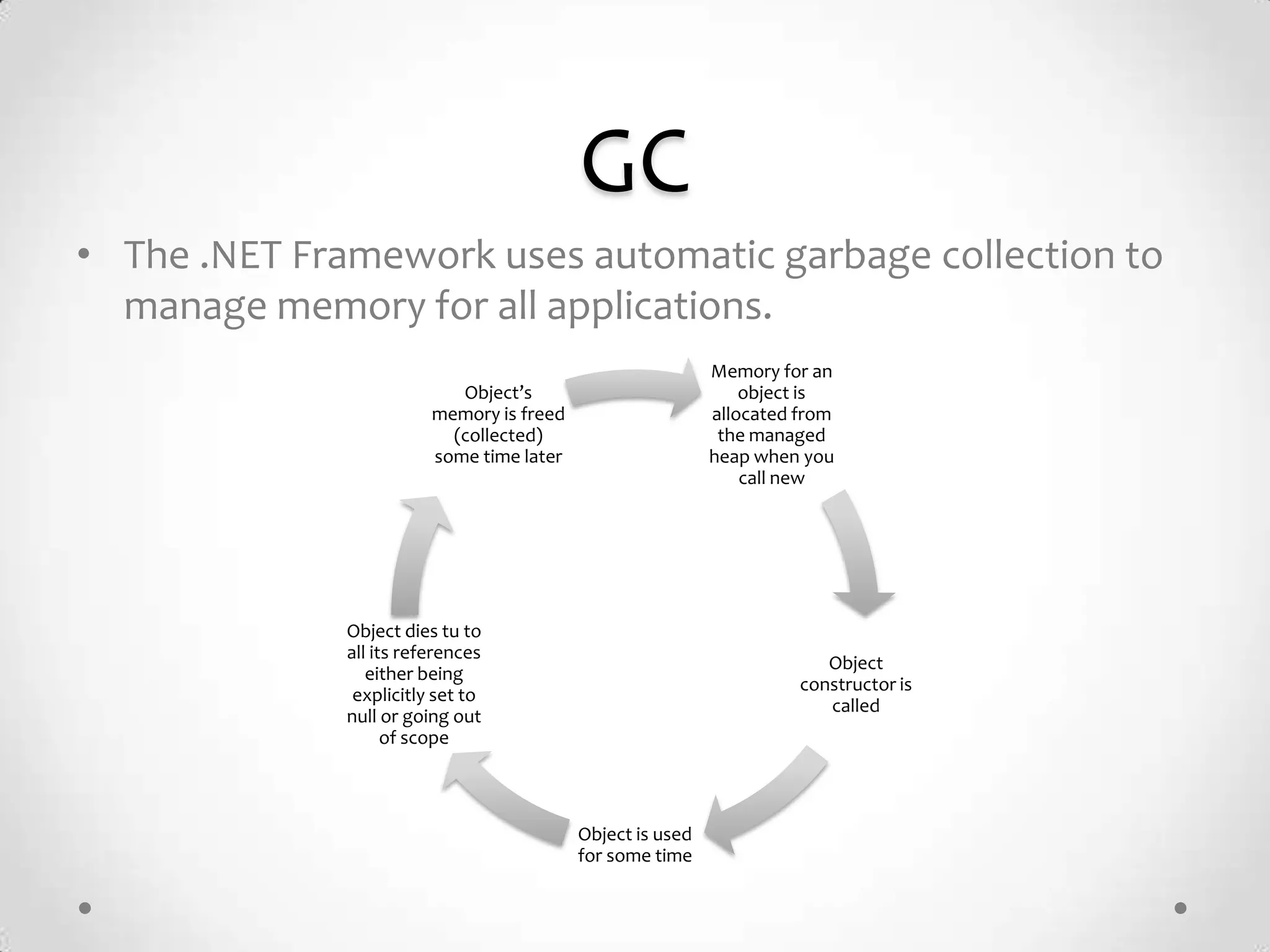
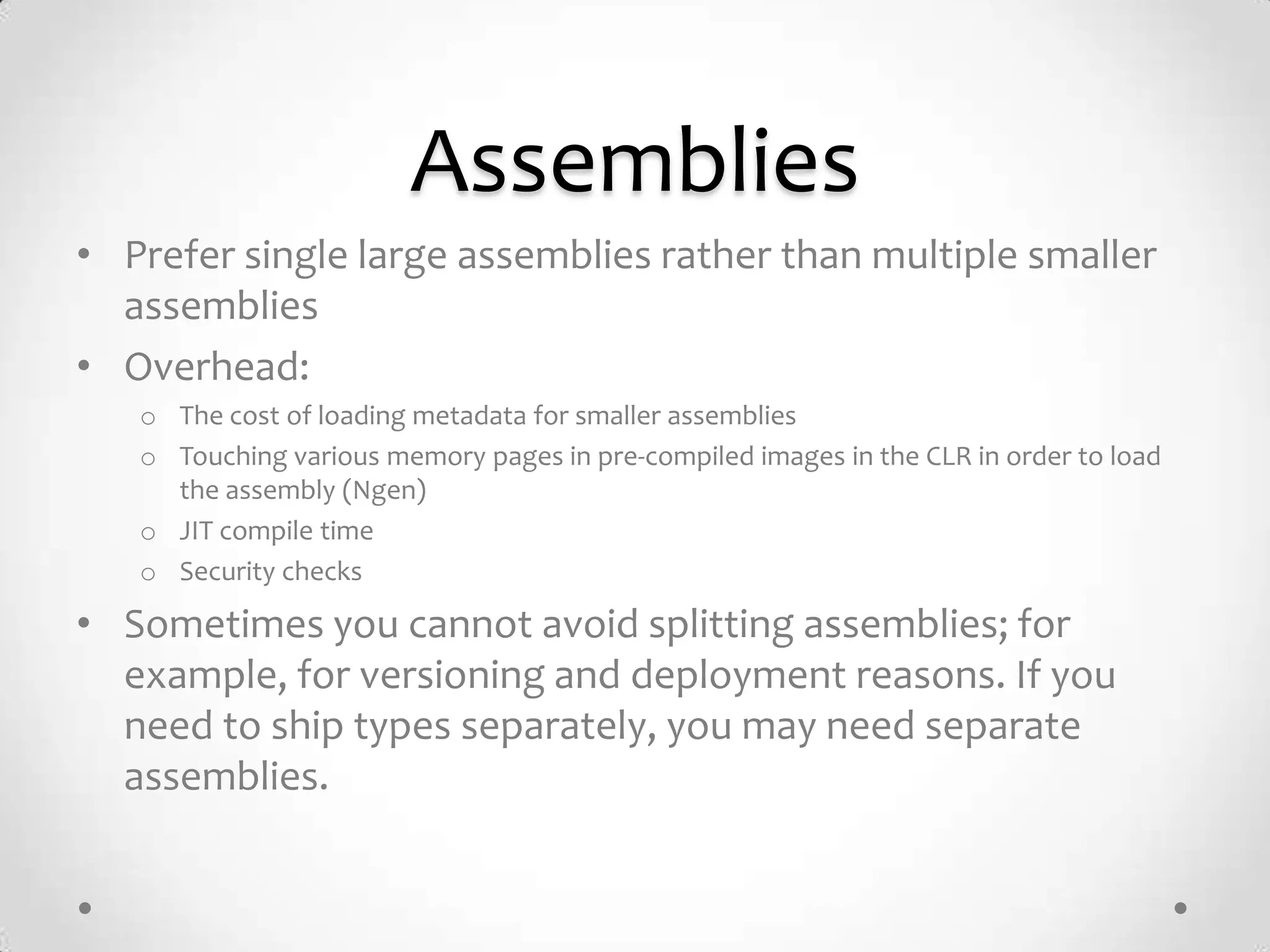

![Reuse Memory
• Do not use a new in a loop
for (int i = 0; i < 100; ++i) unless you really need to.
{
var numbers = new int[10];
// (...) Do something with numbers
Console.WriteLine(numbers.Sum());
}
var numbers = new int[10];
for (int i = 0; i < 100; ++i)
{
// (...) Do something with numbers
Console.WriteLine(numbers.Sum());
}](https://image.slidesharecdn.com/2012-06-28-achievingperformanceincsharp-120810103226-phpapp02/75/Ahieving-Performance-C-11-2048.jpg)
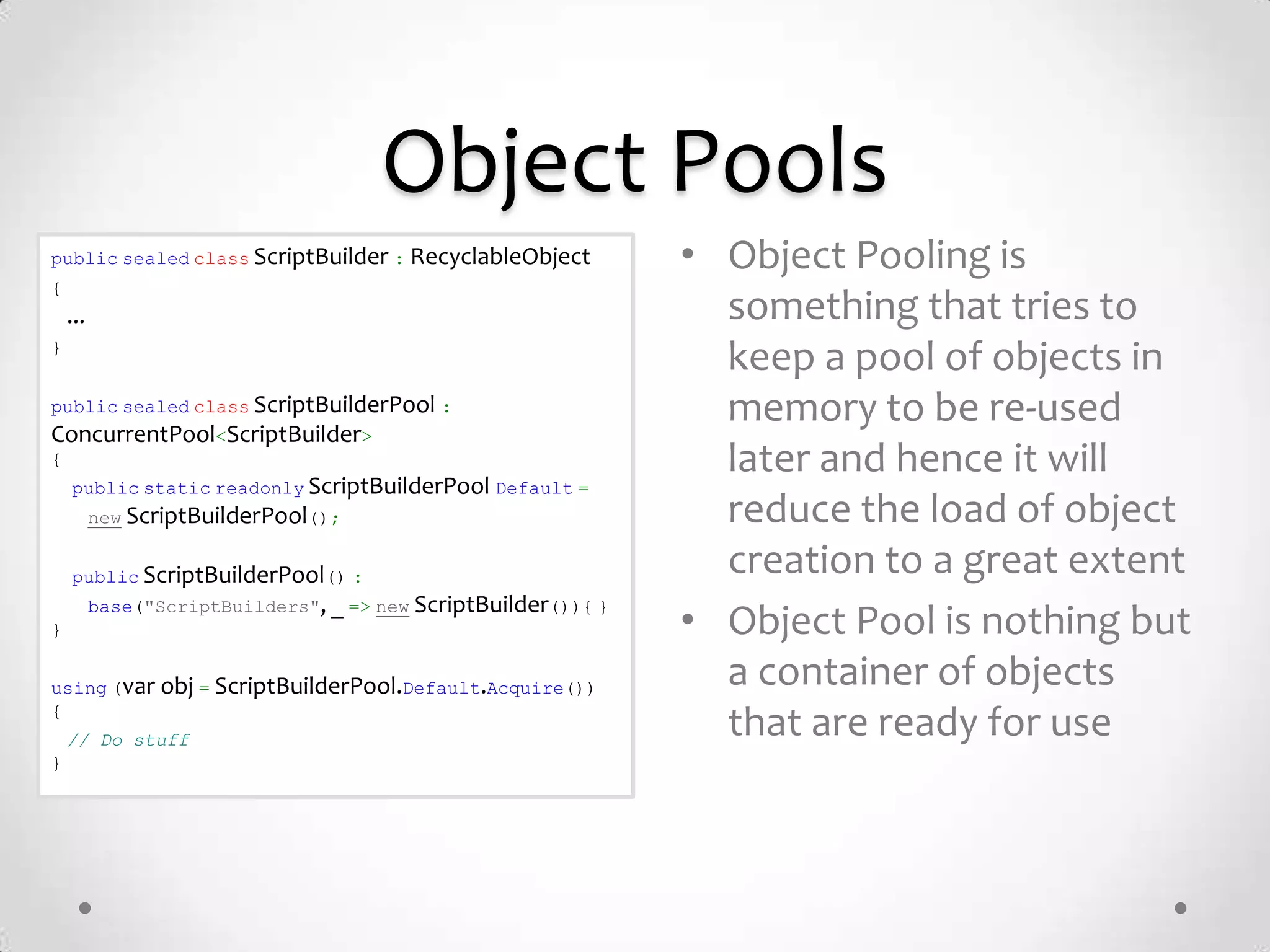
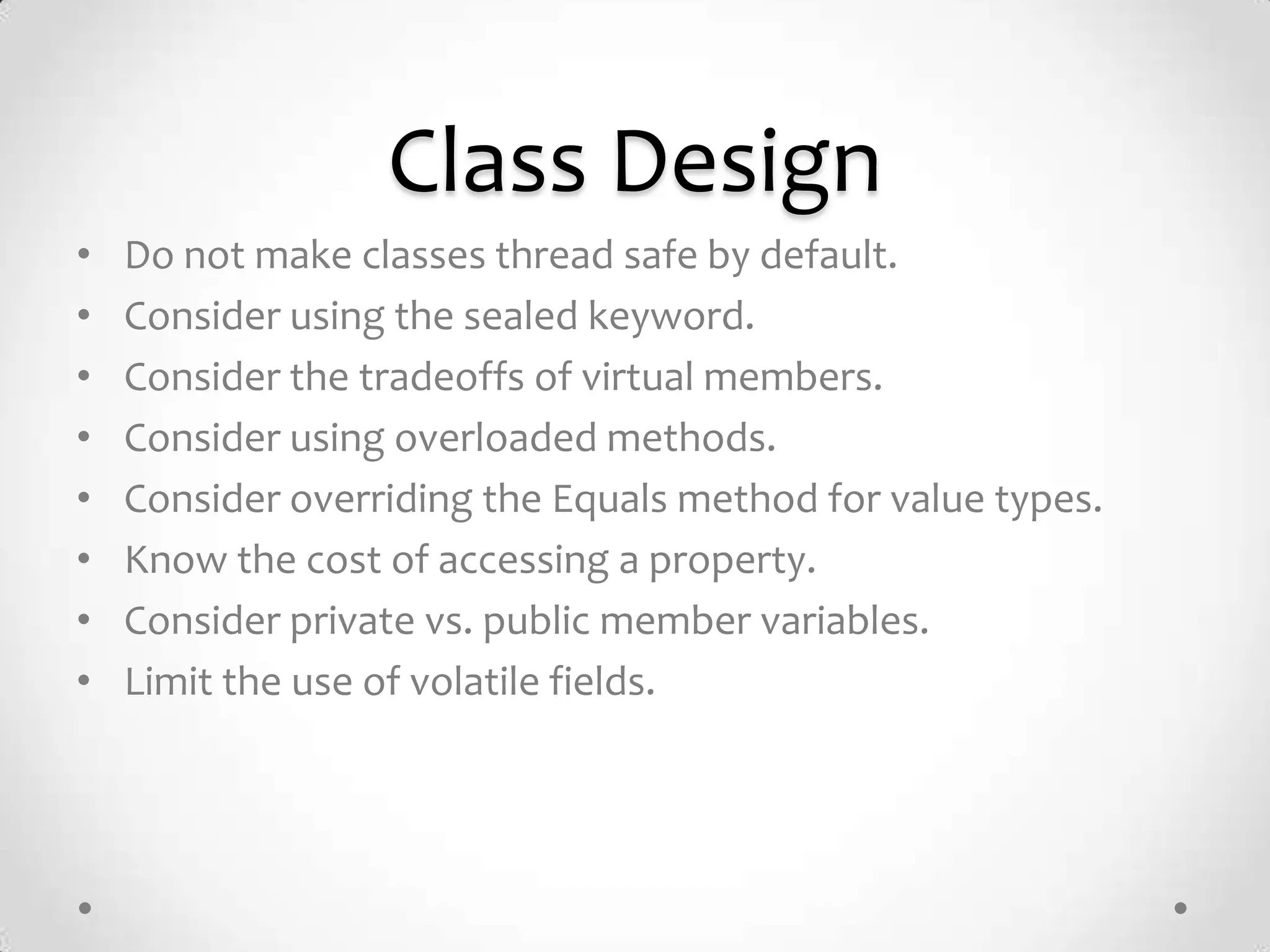
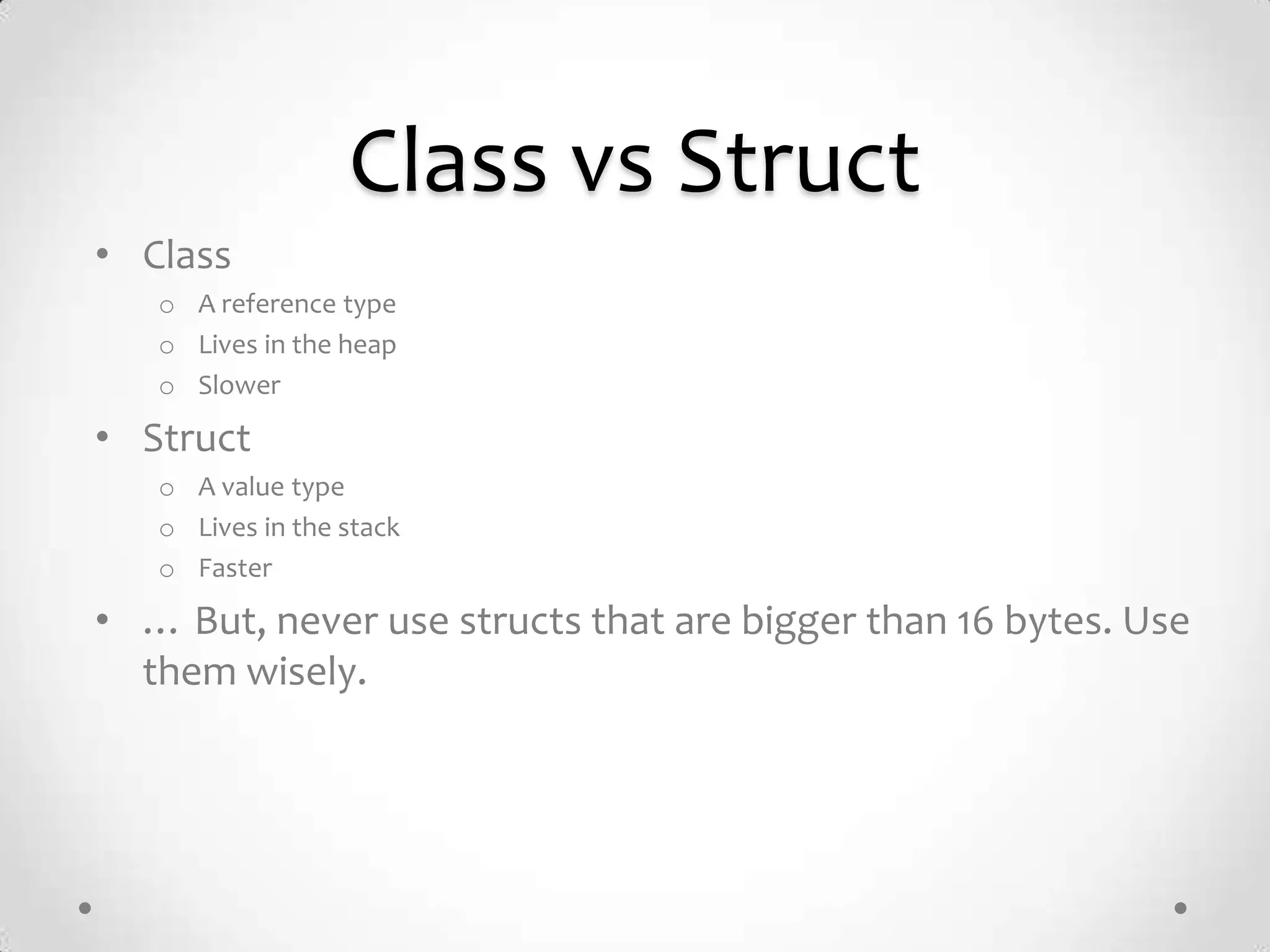
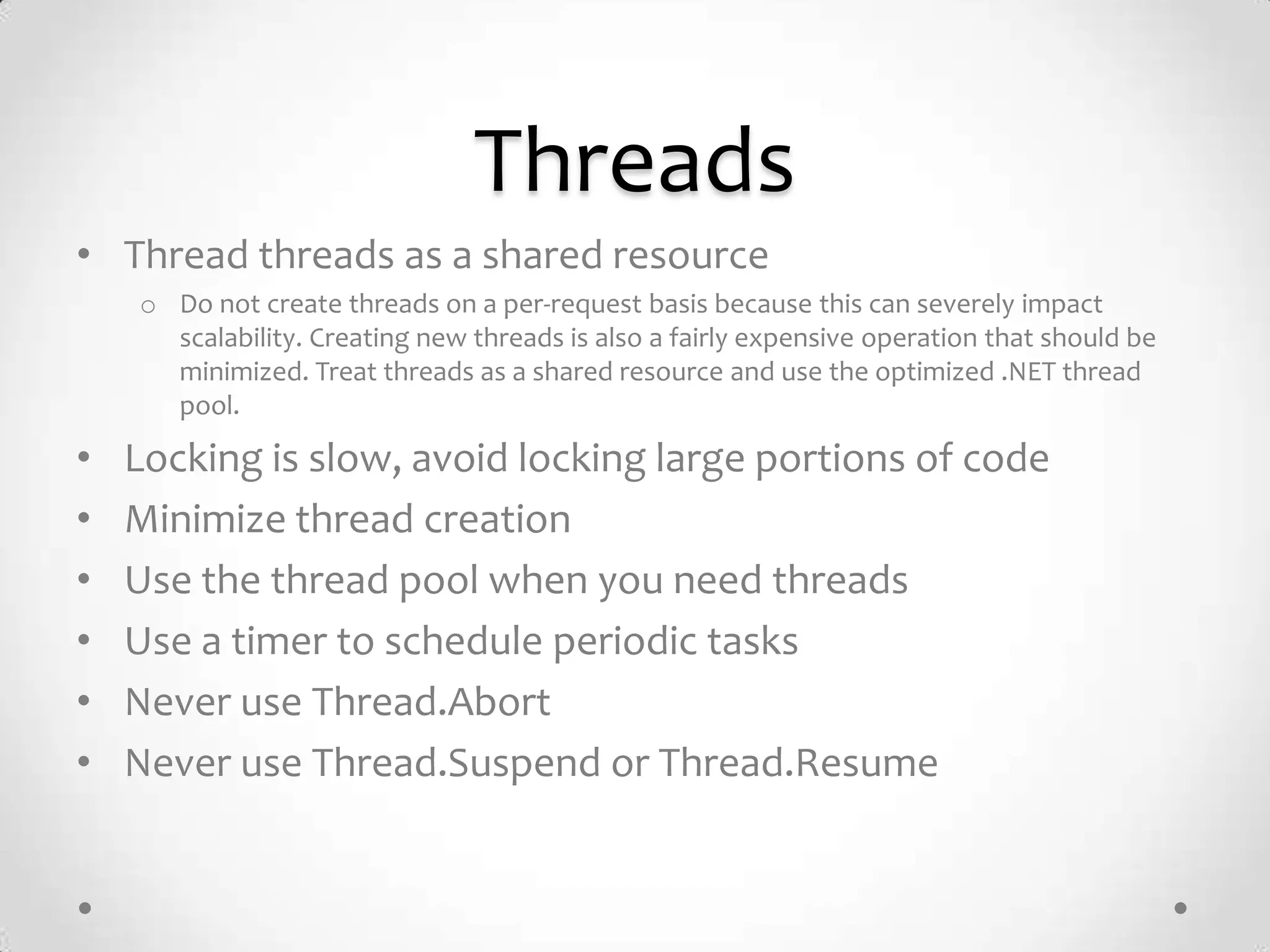
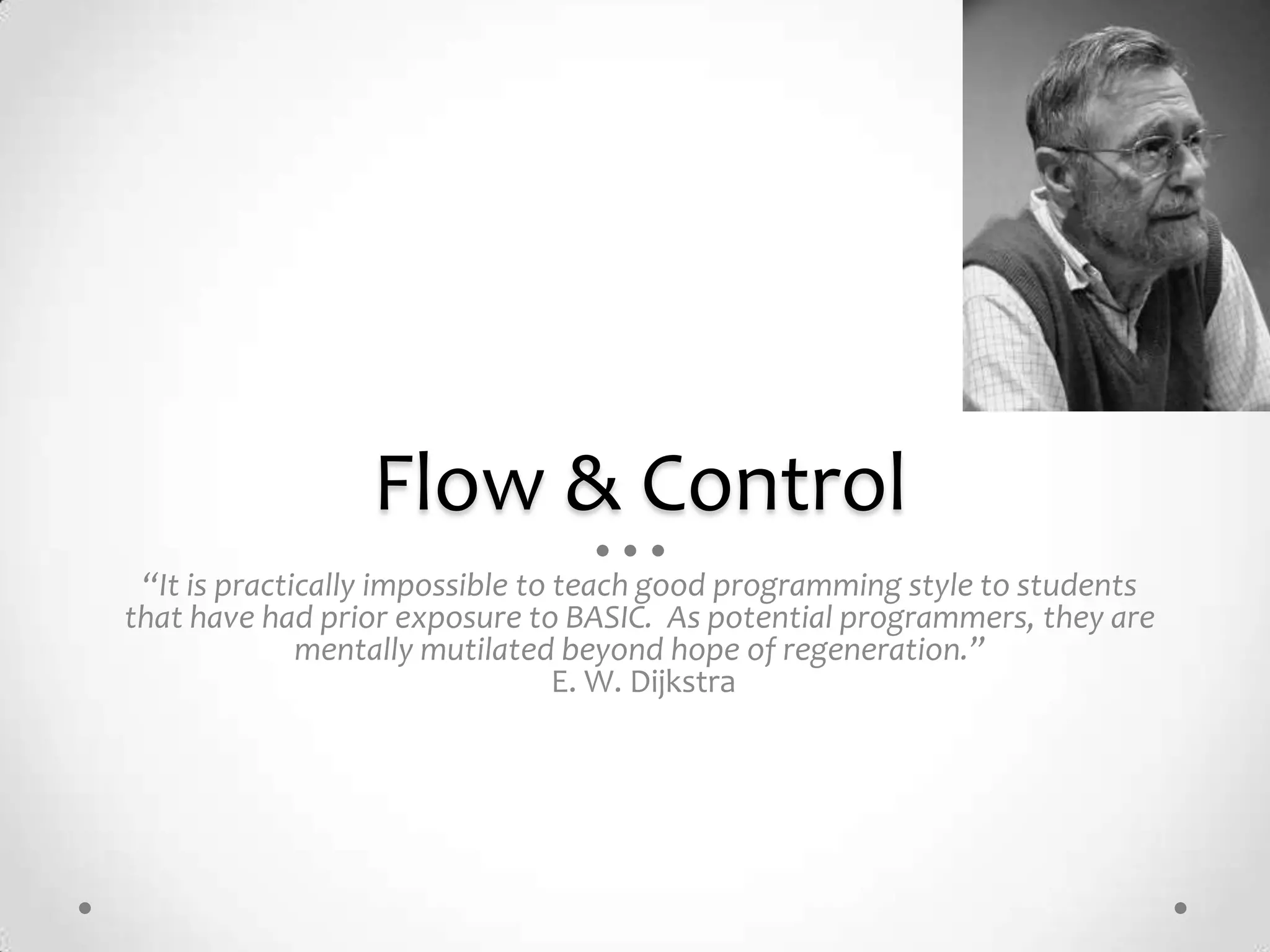
![For vs For..Each
• For and for .. each loops
foreach(var item in List)
are different:
{ o For each is less performant than a
// do something with item for loop
}
o For each creates garbage
int count = List.Length;
• Always prefer for loops for
for(int i=0; i < count; ++i)
{
critical code
var item = List[i];
// do something with item • Any idea why?
}](https://image.slidesharecdn.com/2012-06-28-achievingperformanceincsharp-120810103226-phpapp02/75/Ahieving-Performance-C-17-2048.jpg)
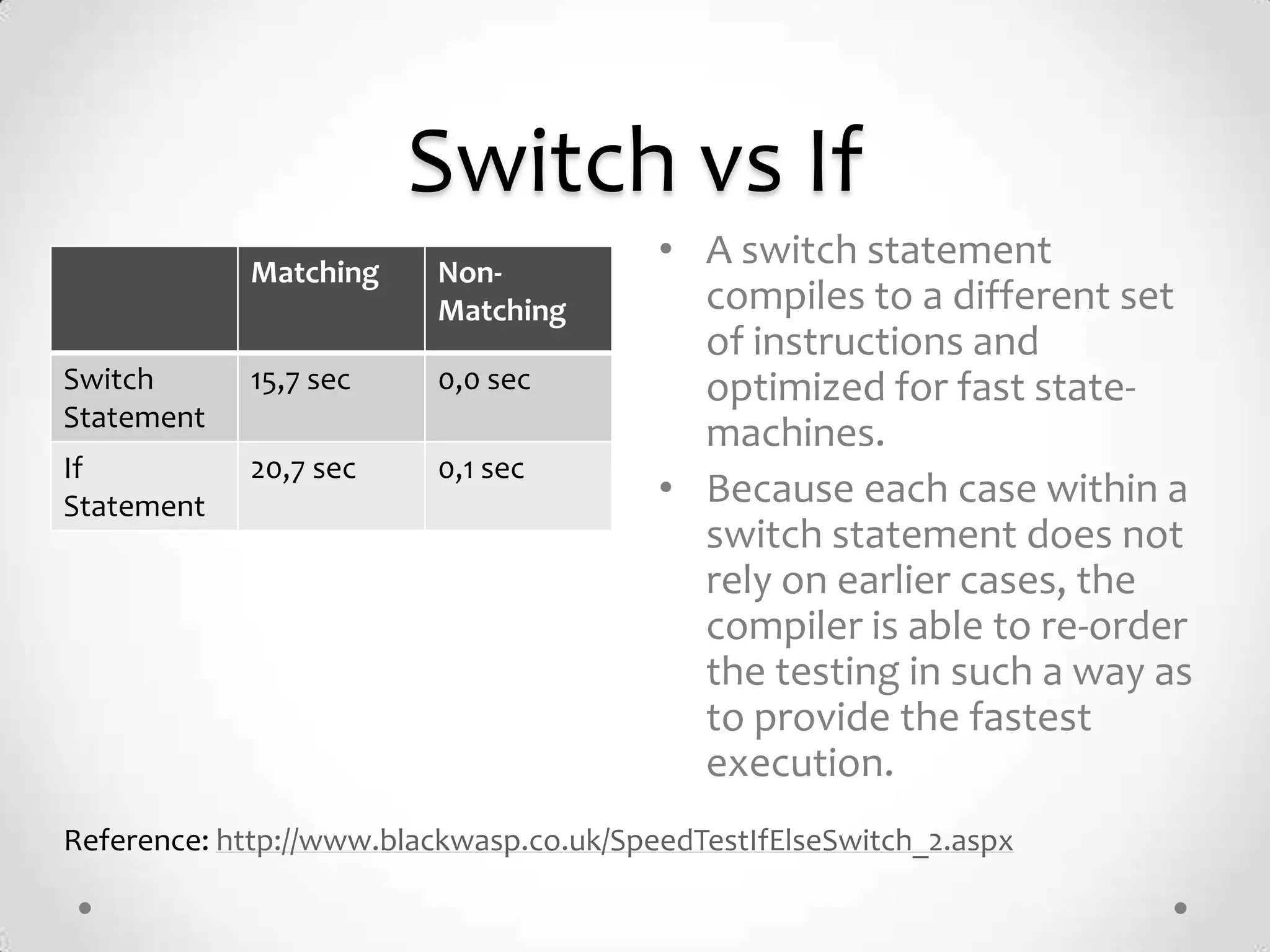
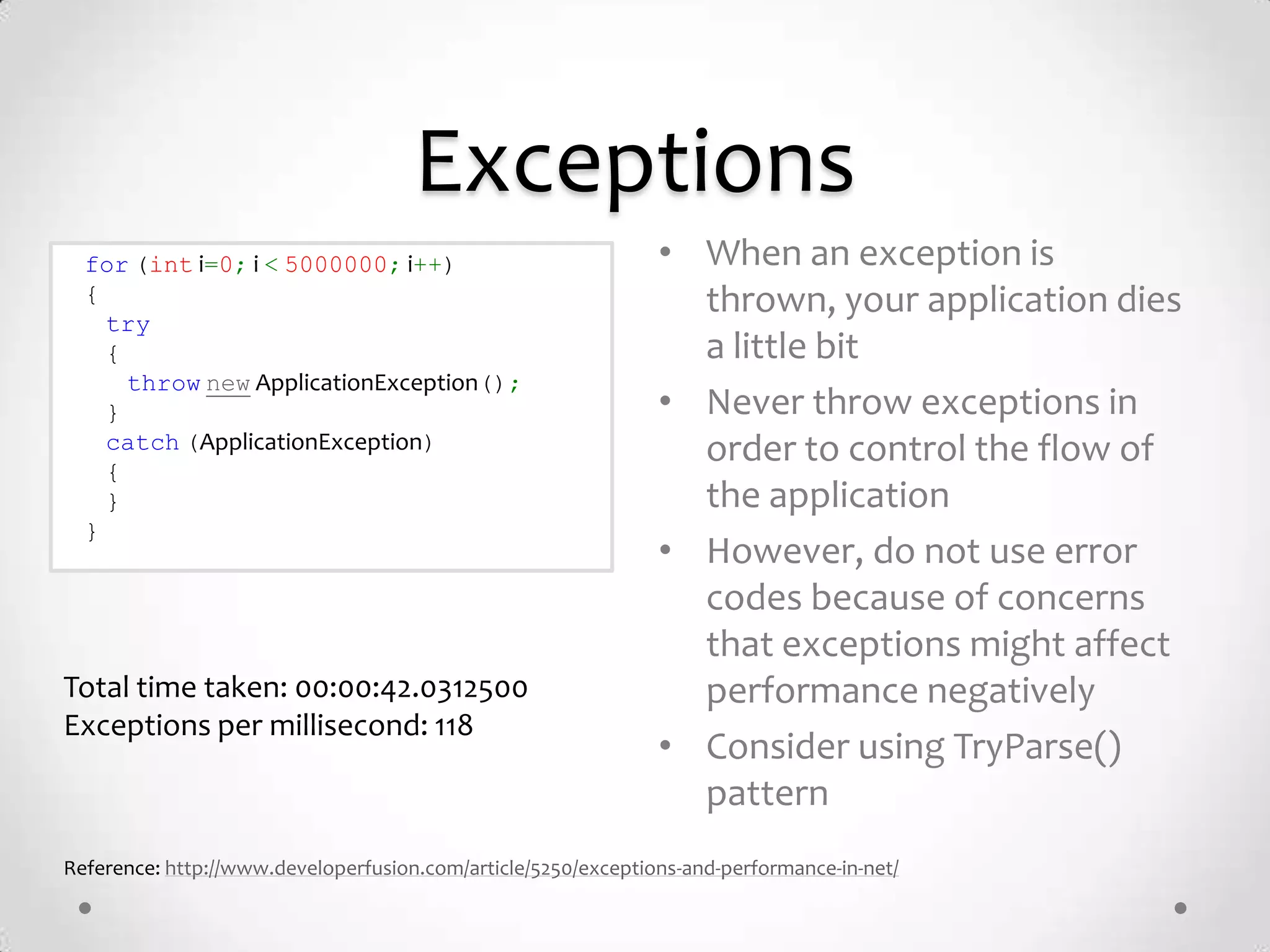
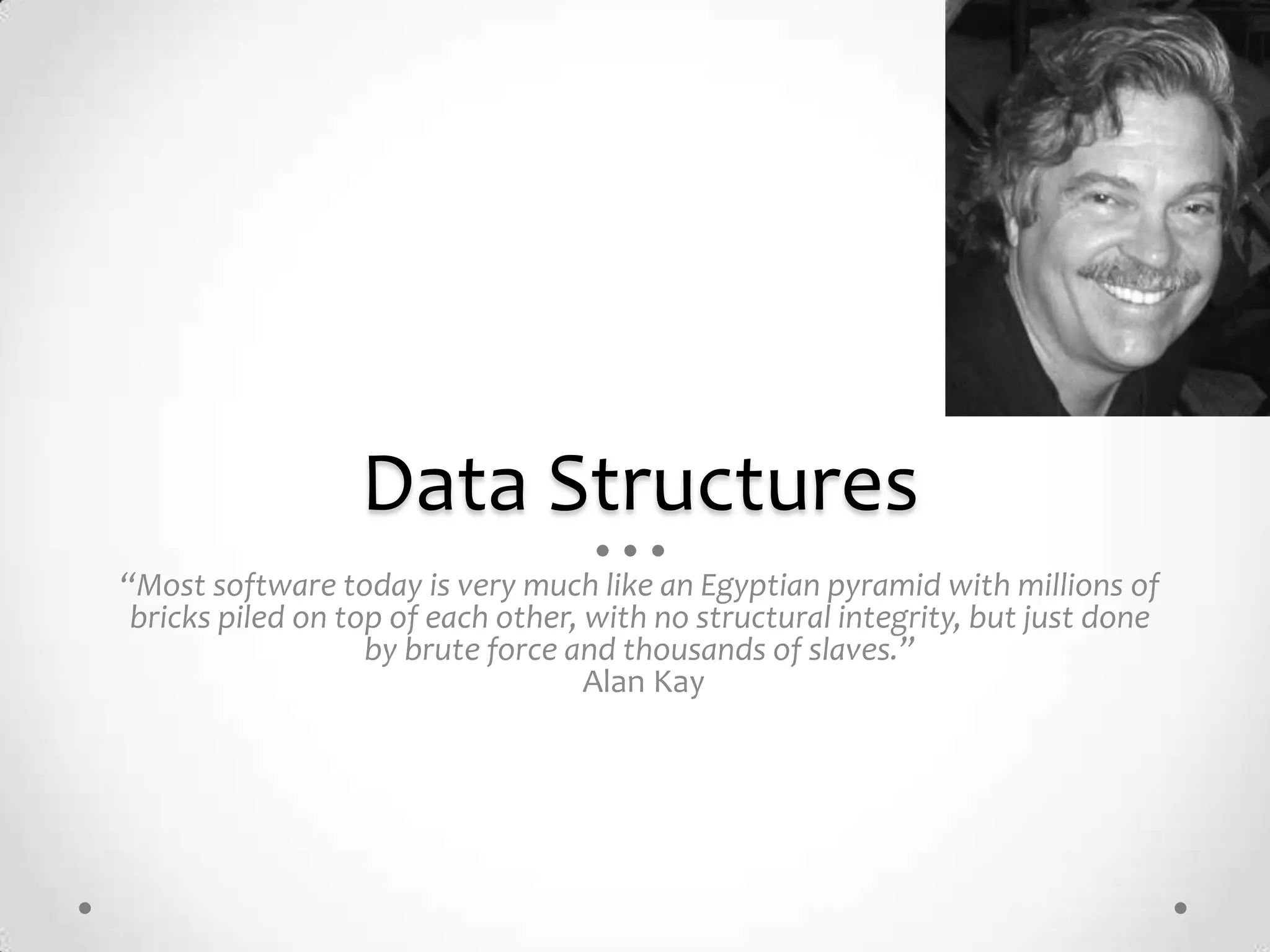
![Strings
string BadConcatenate(string[] items)
• C# strings are immutable
string strRet = string.Empty;
foreach(string item in items) • Prefer String.Concat() to
{
strRet += item; String.Format()
}
return strRet; • StringBuilder is the only
}
way to have mutable
string GoodConcatenate(string[] items) strings, but still creates
{
var builder = new StringBuilder();
some garbage.
foreach(string item in items)
{
builder.Append(item);
}
return builder.ToString();
}](https://image.slidesharecdn.com/2012-06-28-achievingperformanceincsharp-120810103226-phpapp02/75/Ahieving-Performance-C-21-2048.jpg)
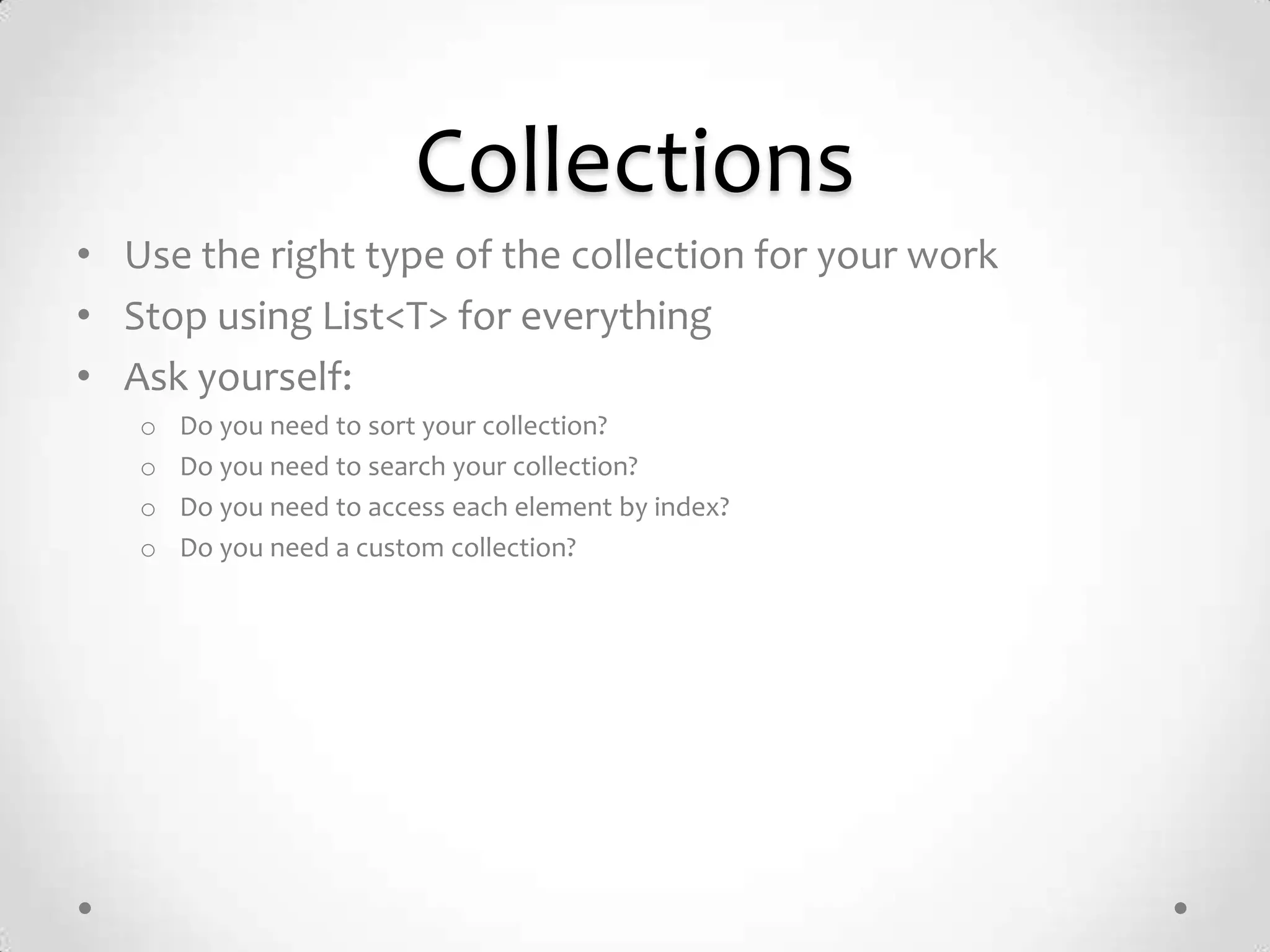
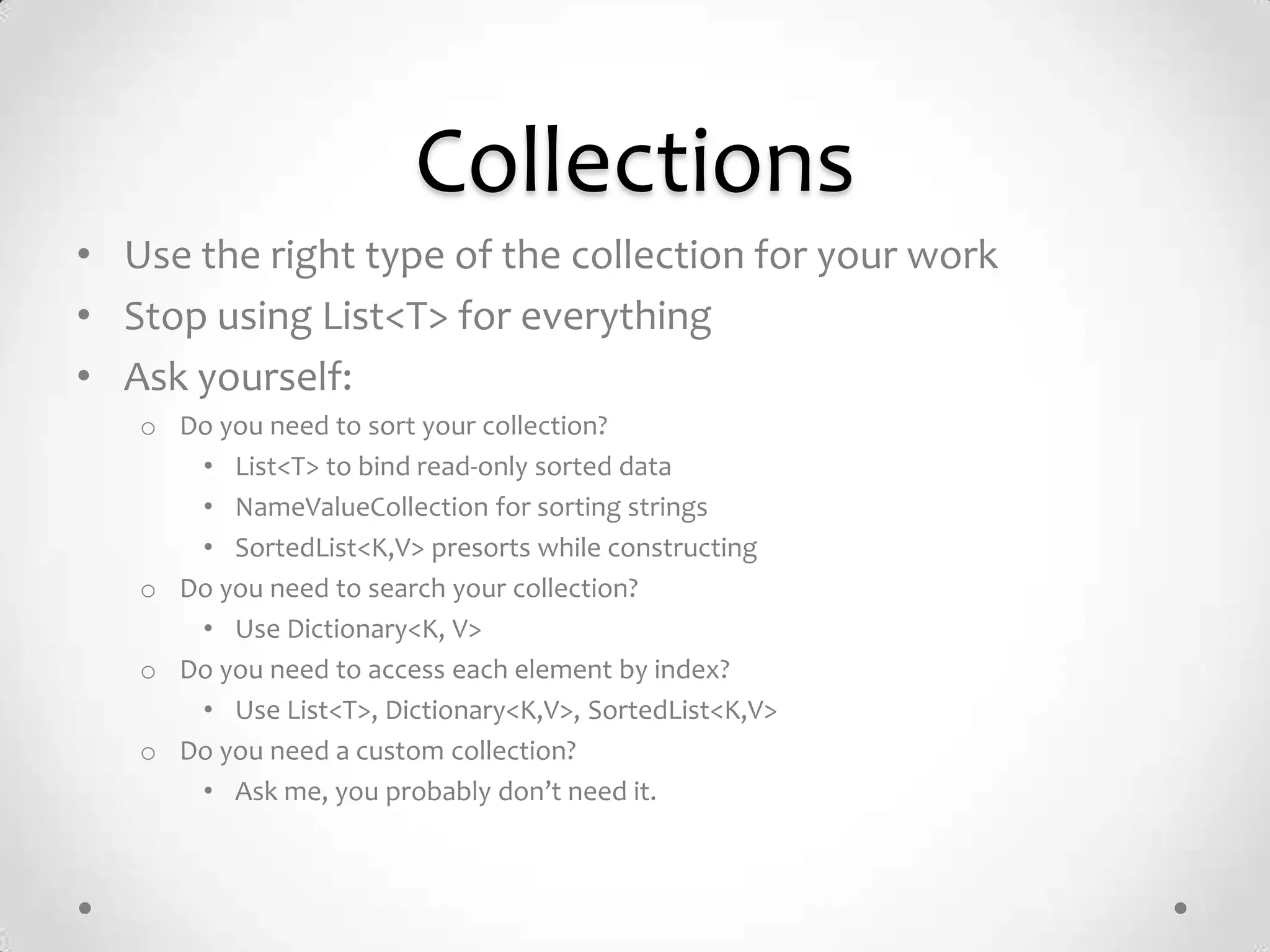
![Arrays
// 2D array of 100 x 100 elements.
for (int a = 0; a < 100; a++) • Multidimensional Arrays [,]
{
for (int x = 0; x < 100; x++)
are slow.
{
int c = a1[a, x];
• Prefer jagged [][] arrays.
}
} • Arrays have a static size.
The size of the array
// Jagged array of 100 x 100
elements. remains fixed after initial
for (int a = 0; a < 100; a++)
{
allocation.
for (int x = 0; x < 100; x++)
{
int c = a2[a][x]; 2D array looping: 4571 ms
} Jagged array looping: 2864 ms [faster]
}
Reference: http://www.dotnetperls.com/regex-performance](https://image.slidesharecdn.com/2012-06-28-achievingperformanceincsharp-120810103226-phpapp02/75/Ahieving-Performance-C-24-2048.jpg)
![RegEx
static Regex wordRegex = new • A regular expression is
Regex(@"W+", RegexOptions.Compiled);
essentially a state machine
static void Main()
{ • Always use
string s = "This is a simple /string/
for Regex.";
RegexOptions.Compiled if
string[] c = wordRegex.Split(s); you plan to reuse a regular
foreach (string m in c)
{ expression
Console.WriteLine(m);
} • RegexOptions.Compiled
}
takes 10x longer to
startup, but yields 30%
better runtime.
Reference: http://www.dotnetperls.com/regex-performance](https://image.slidesharecdn.com/2012-06-28-achievingperformanceincsharp-120810103226-phpapp02/75/Ahieving-Performance-C-25-2048.jpg)
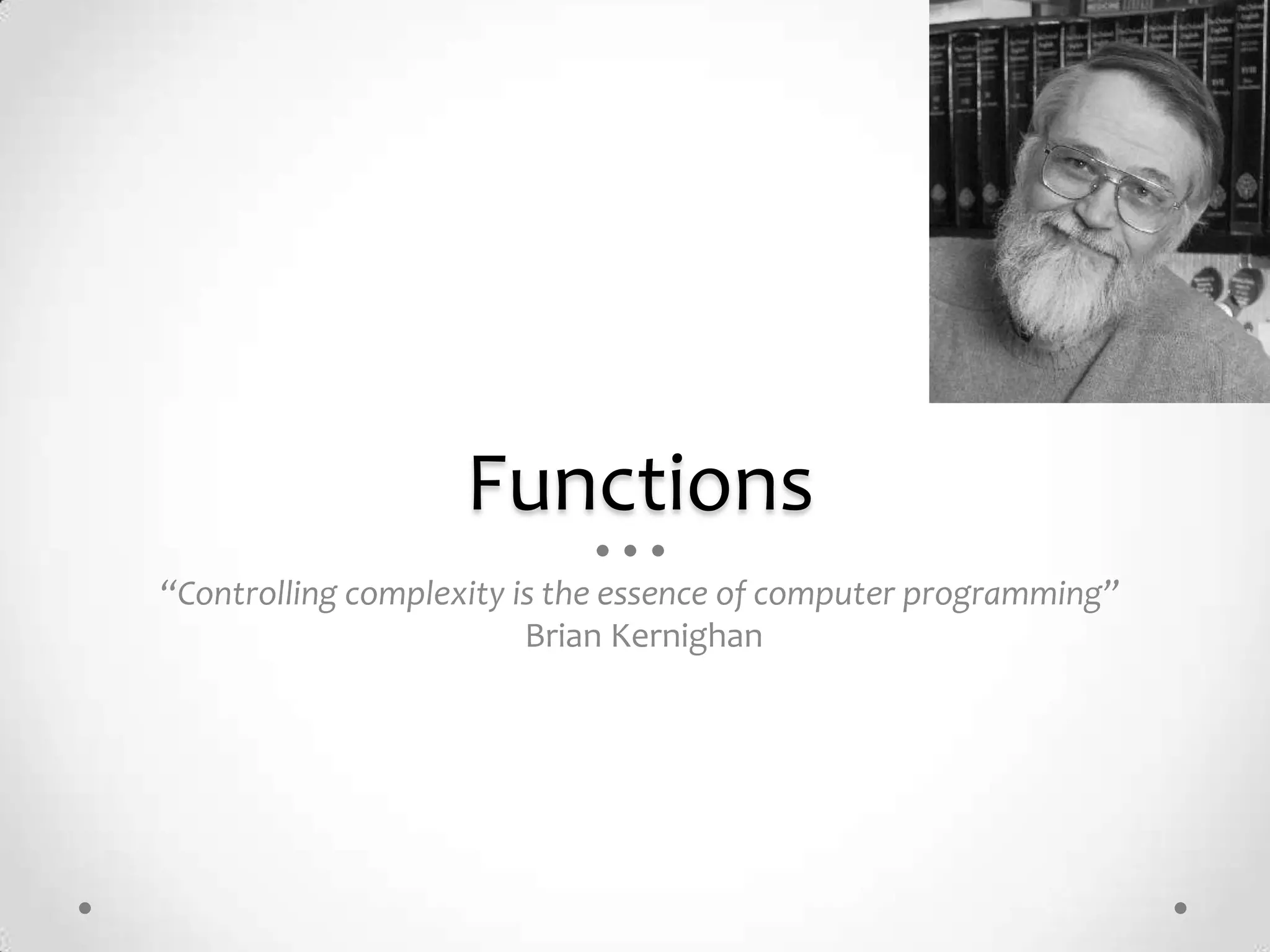

![Copying Buffers
int[] arr1 = new int[] { 1, 2, 3, 4, 5 };
int[] arr2 = new int[10]; • Never copy buffers with a
// Copy the first twenty bytes from
loop, prefer
arr1 to arr2 Buffer.BlockCopy() or
Buffer.BlockCopy(arr1, 0, arr2, 0,
5 * sizeof(int) Array.Copy()
);](https://image.slidesharecdn.com/2012-06-28-achievingperformanceincsharp-120810103226-phpapp02/75/Ahieving-Performance-C-28-2048.jpg)

